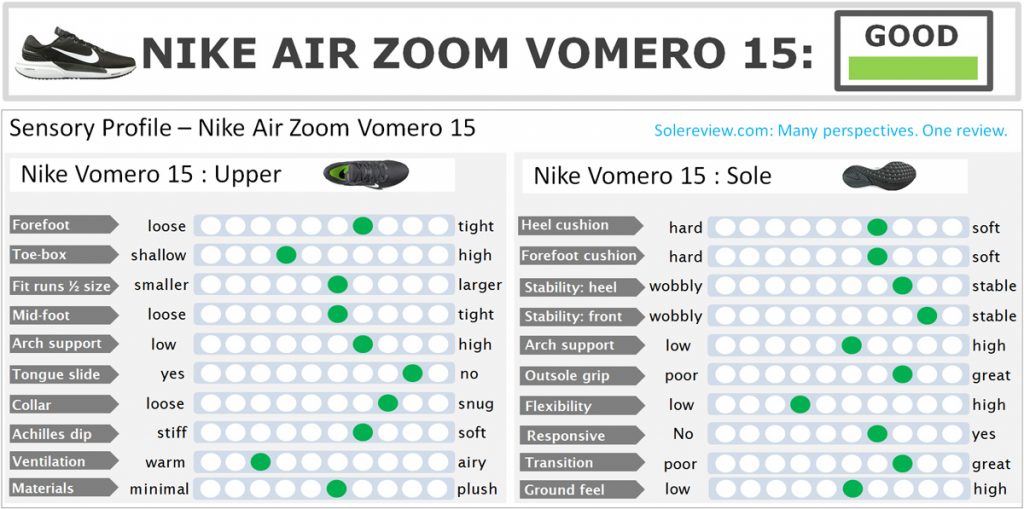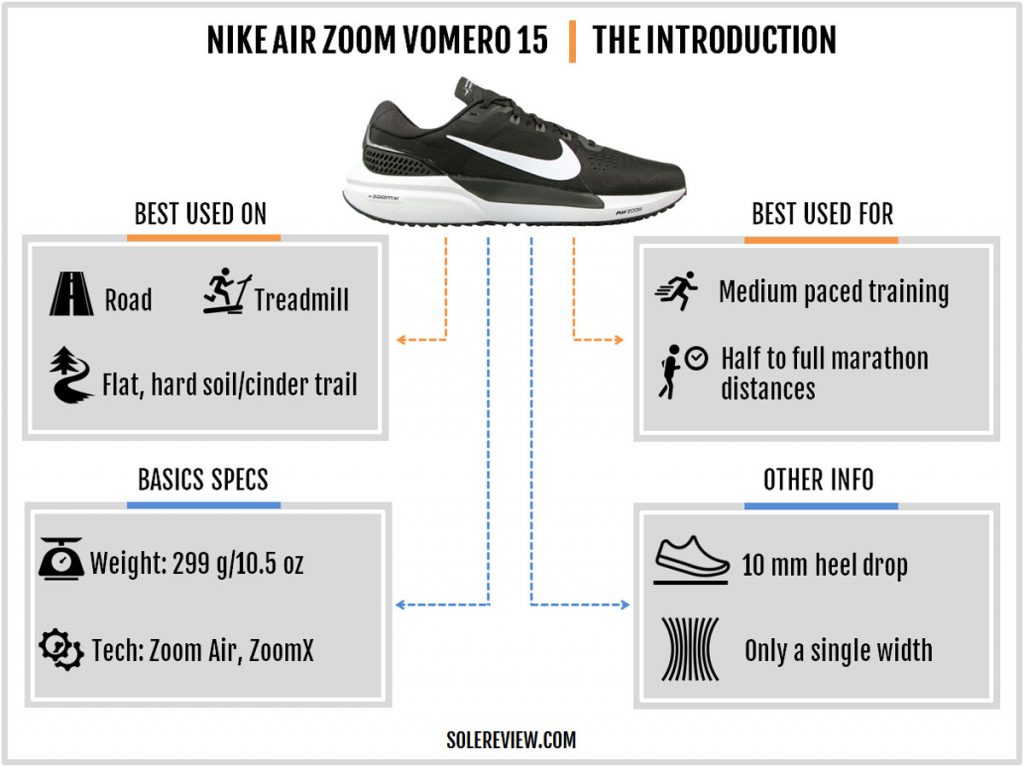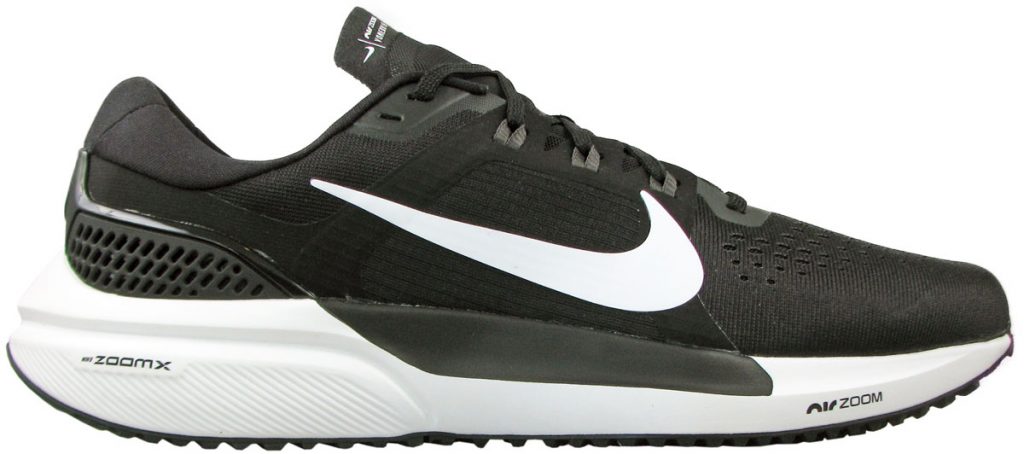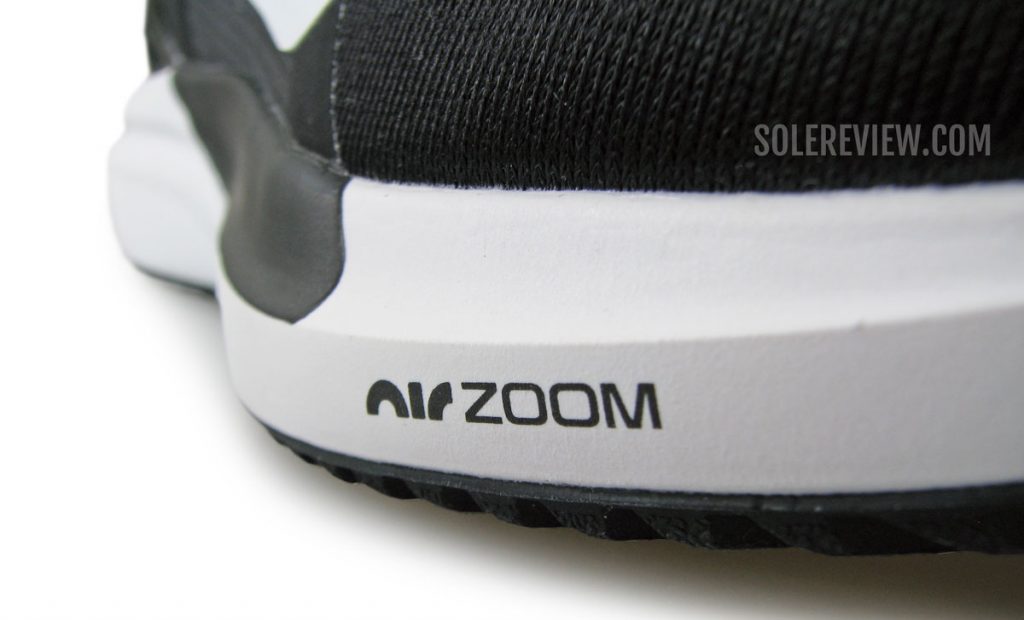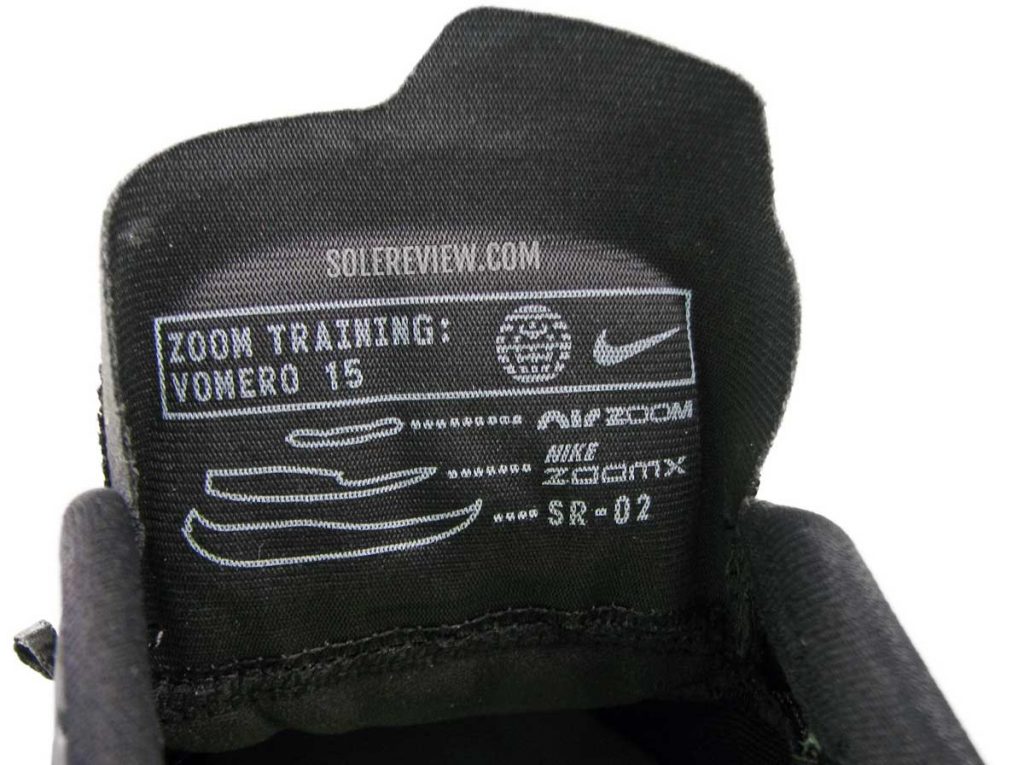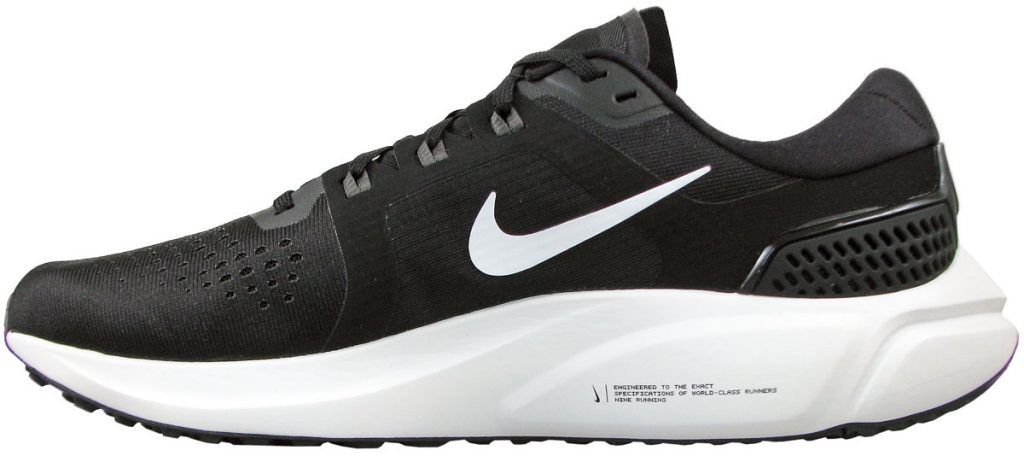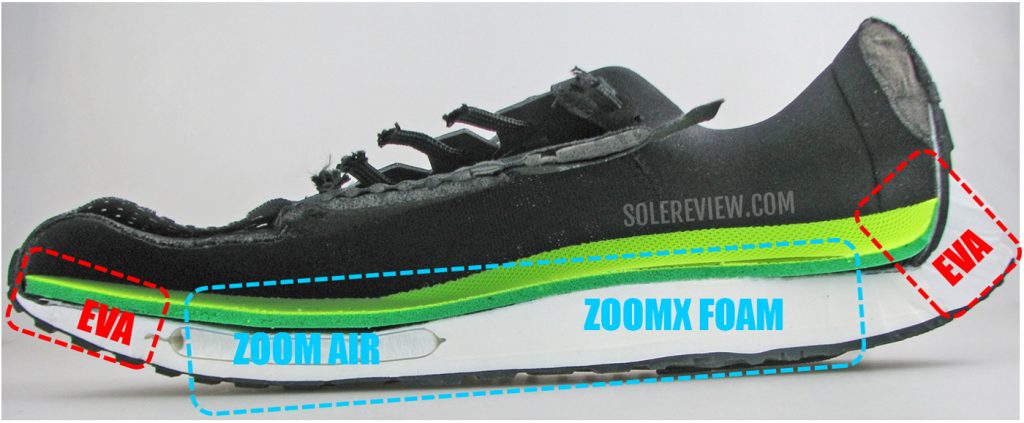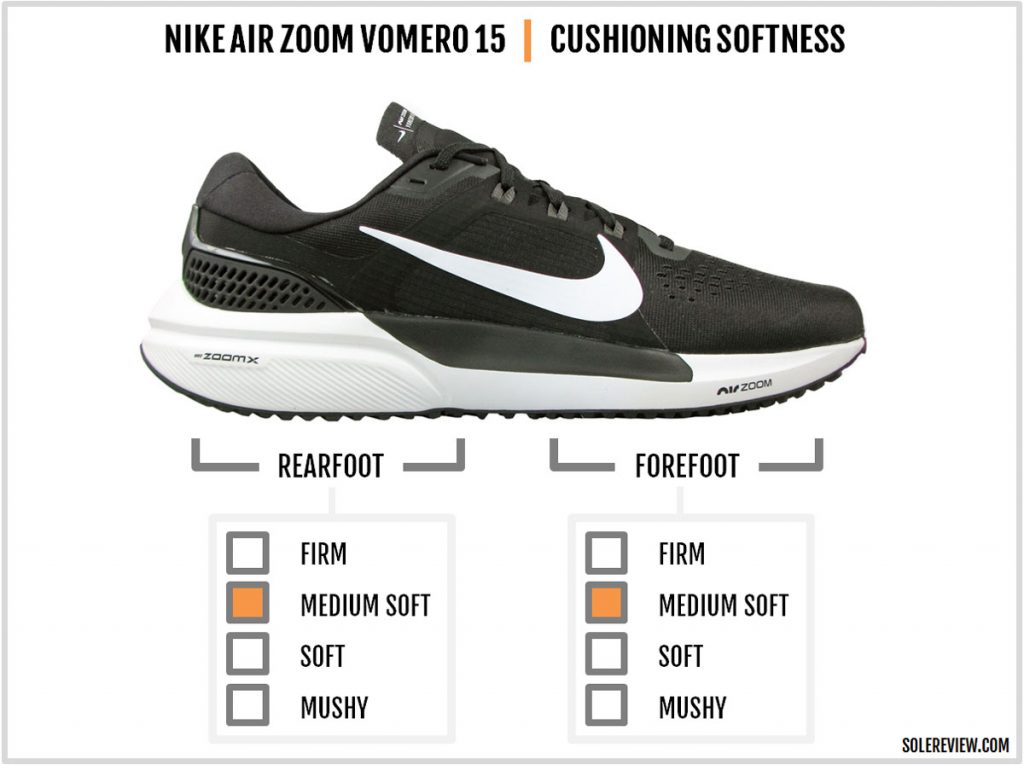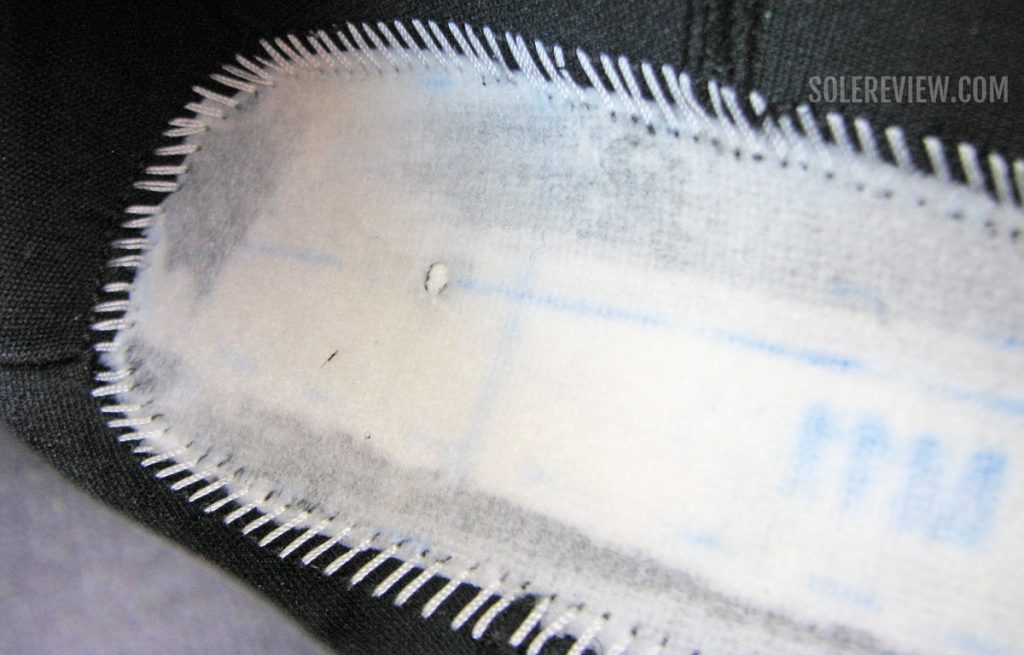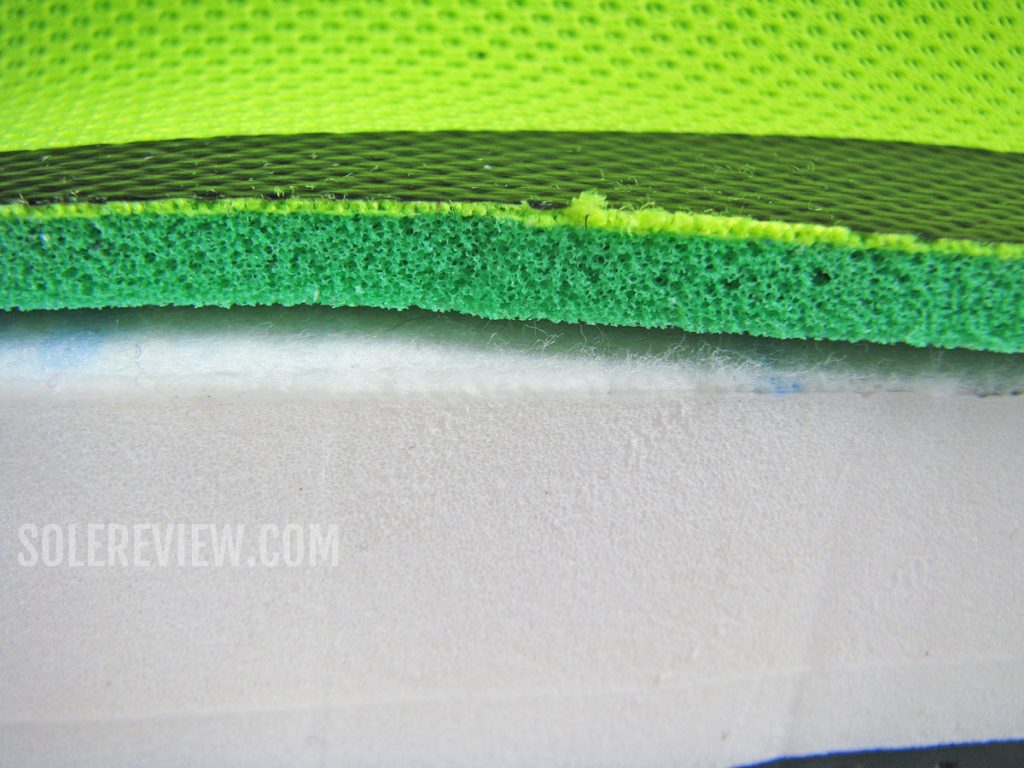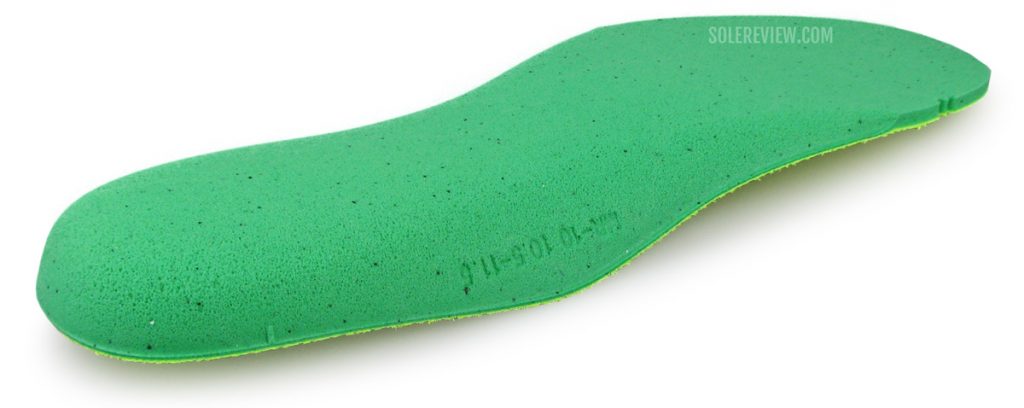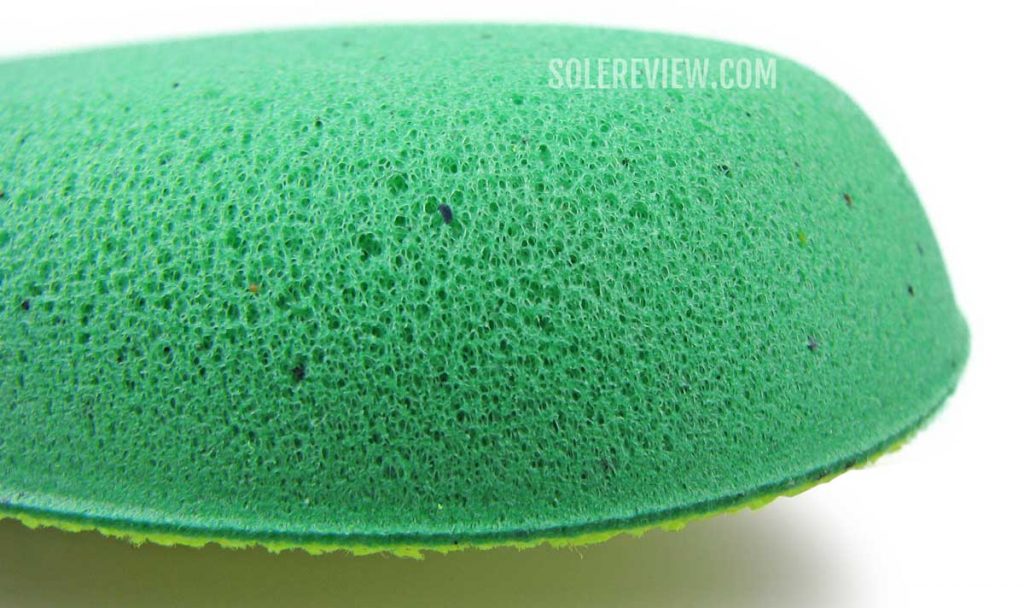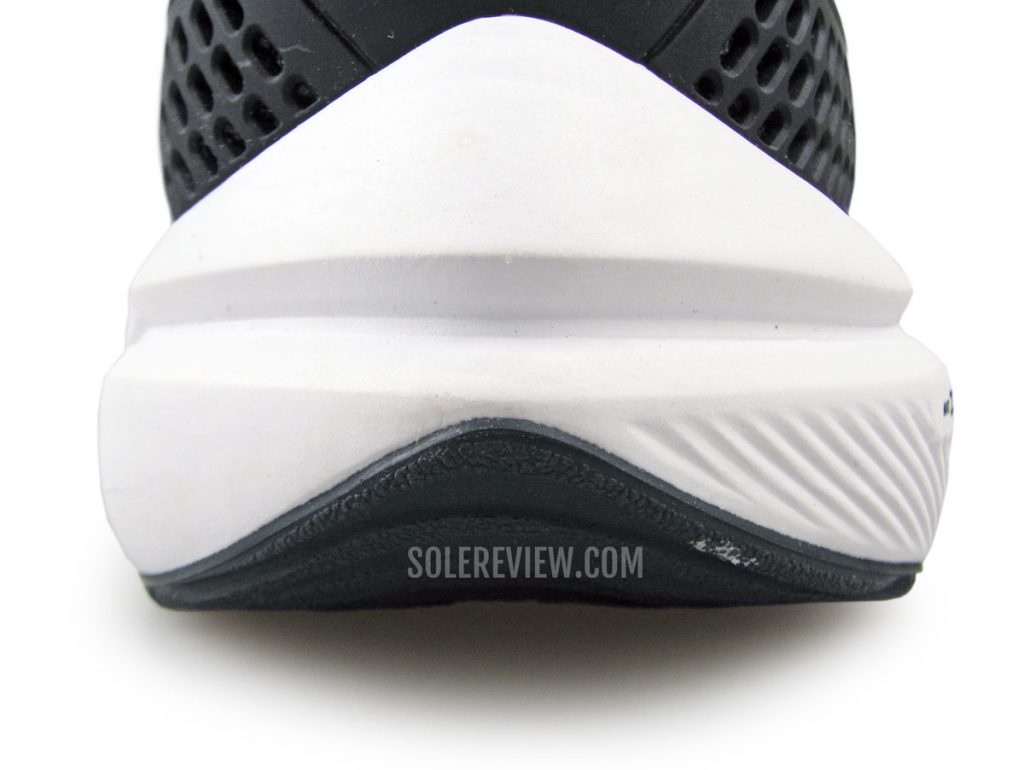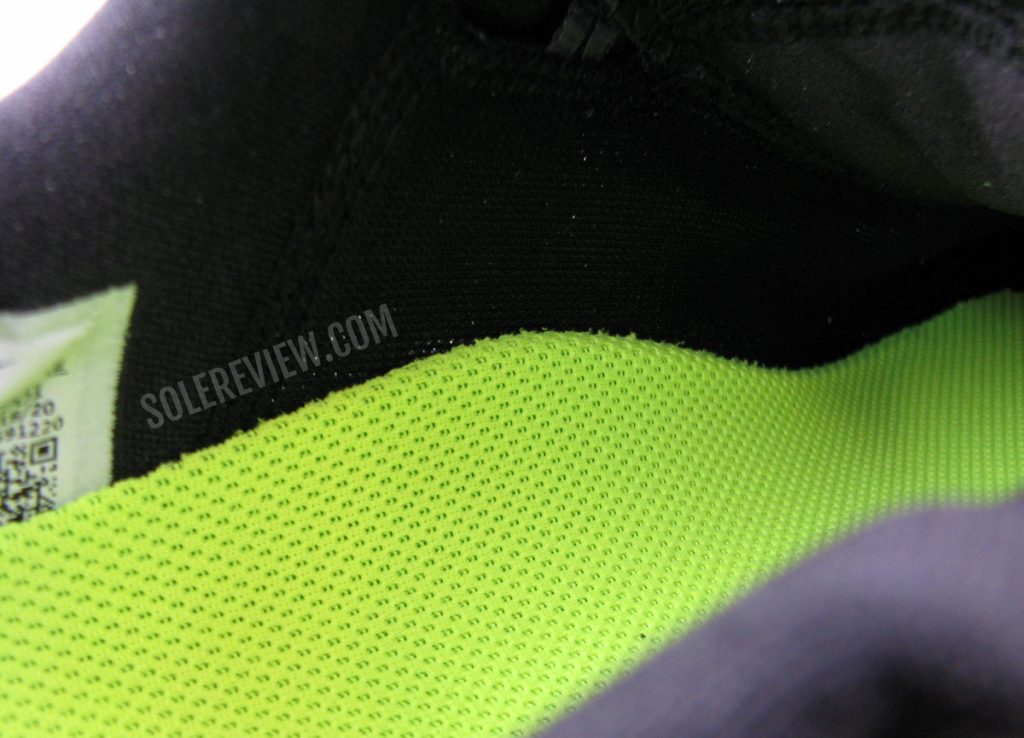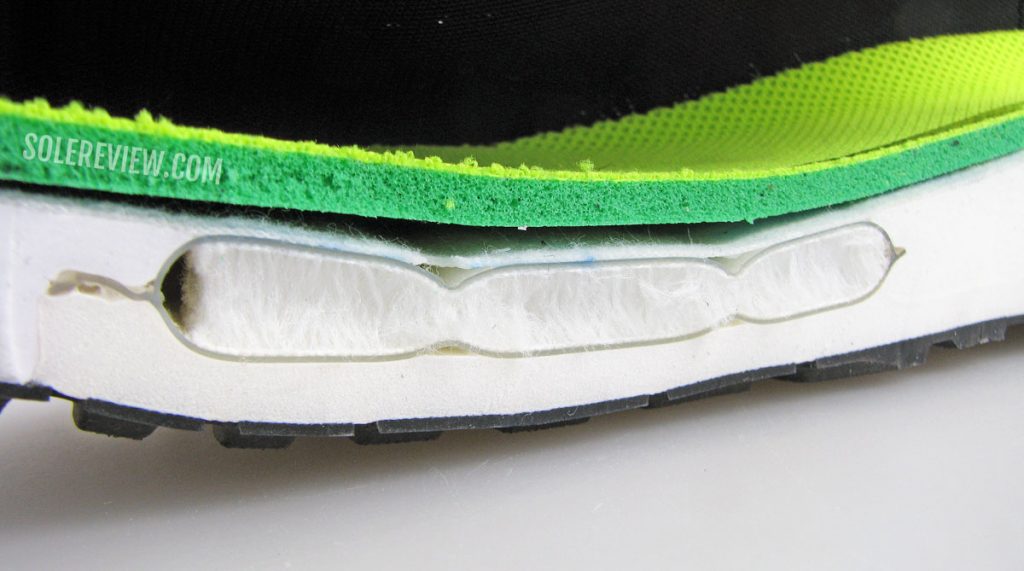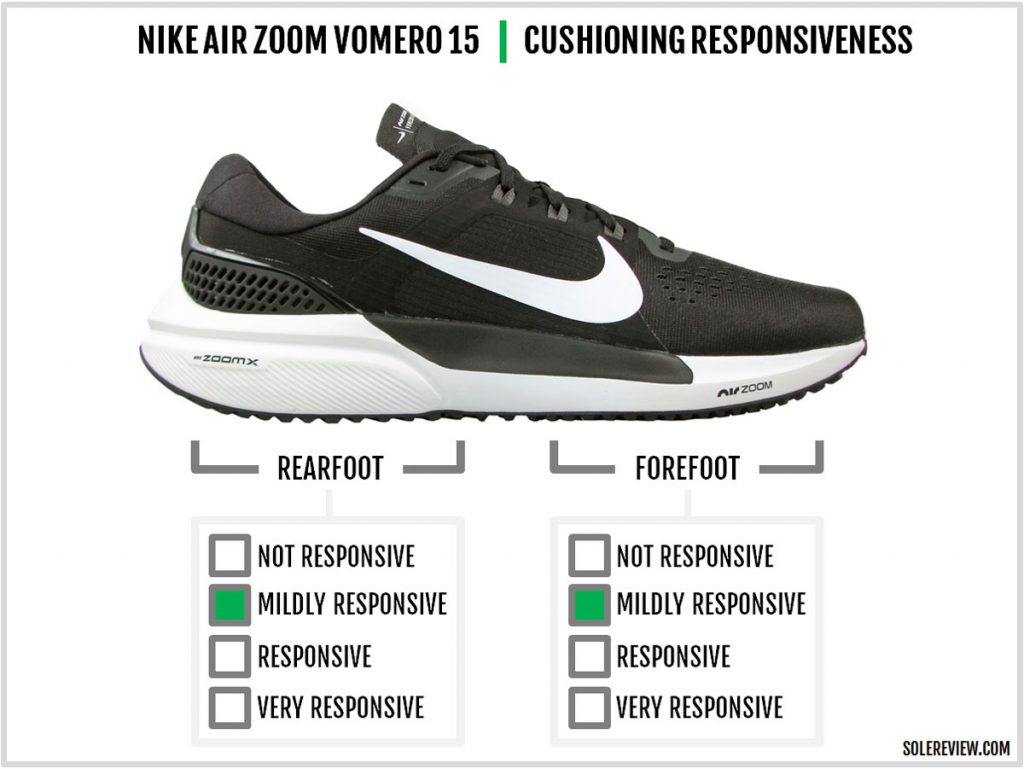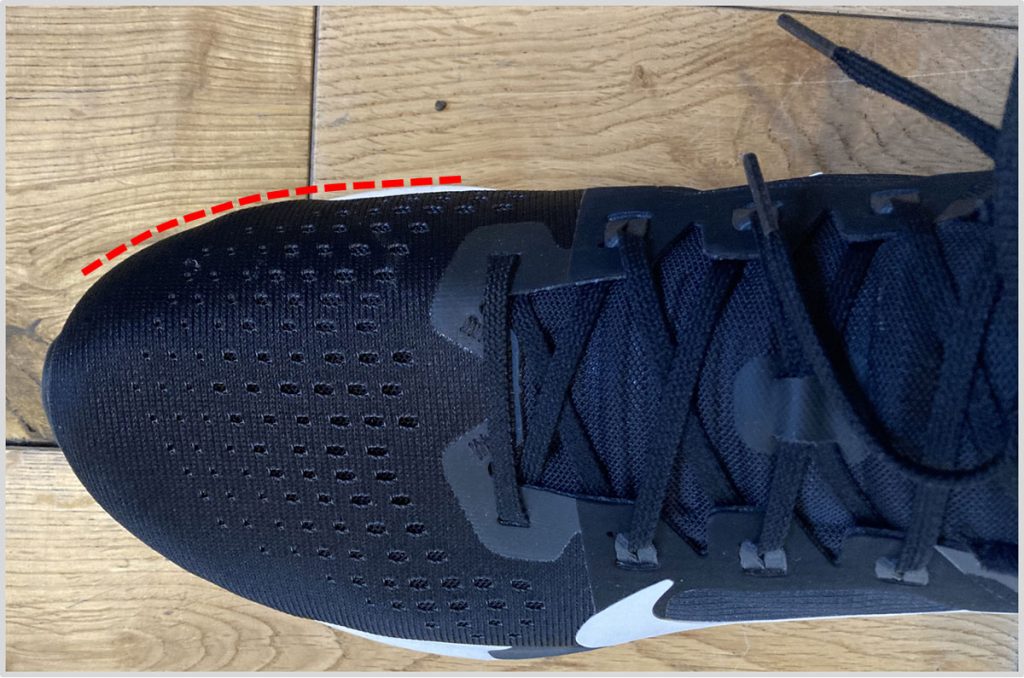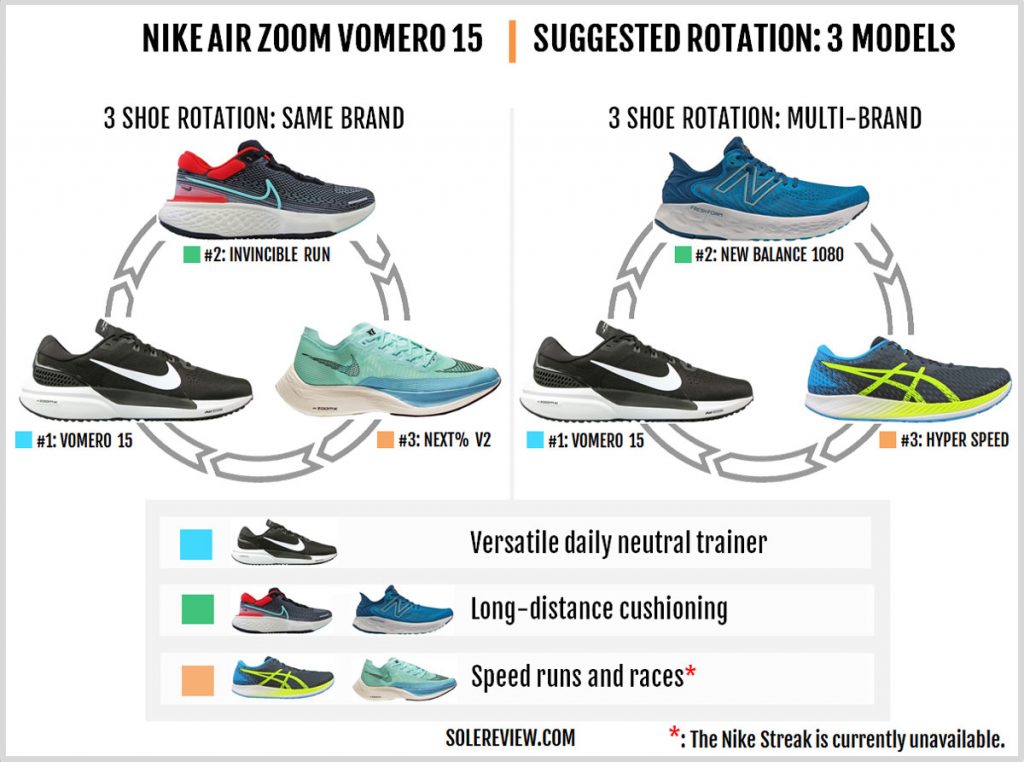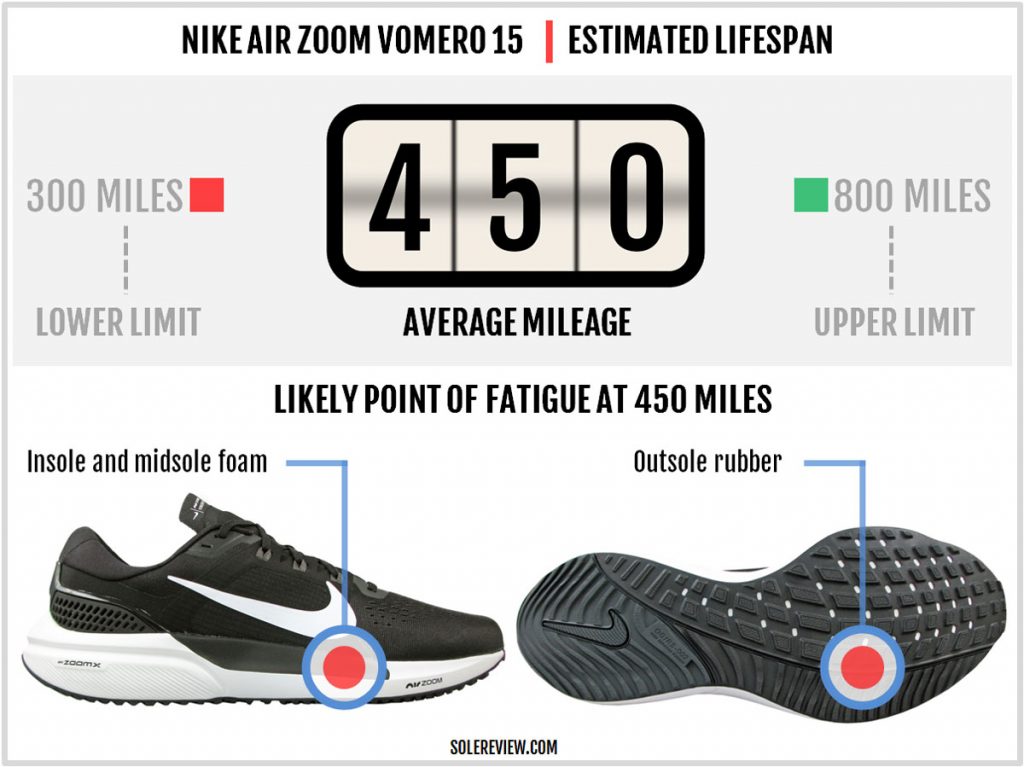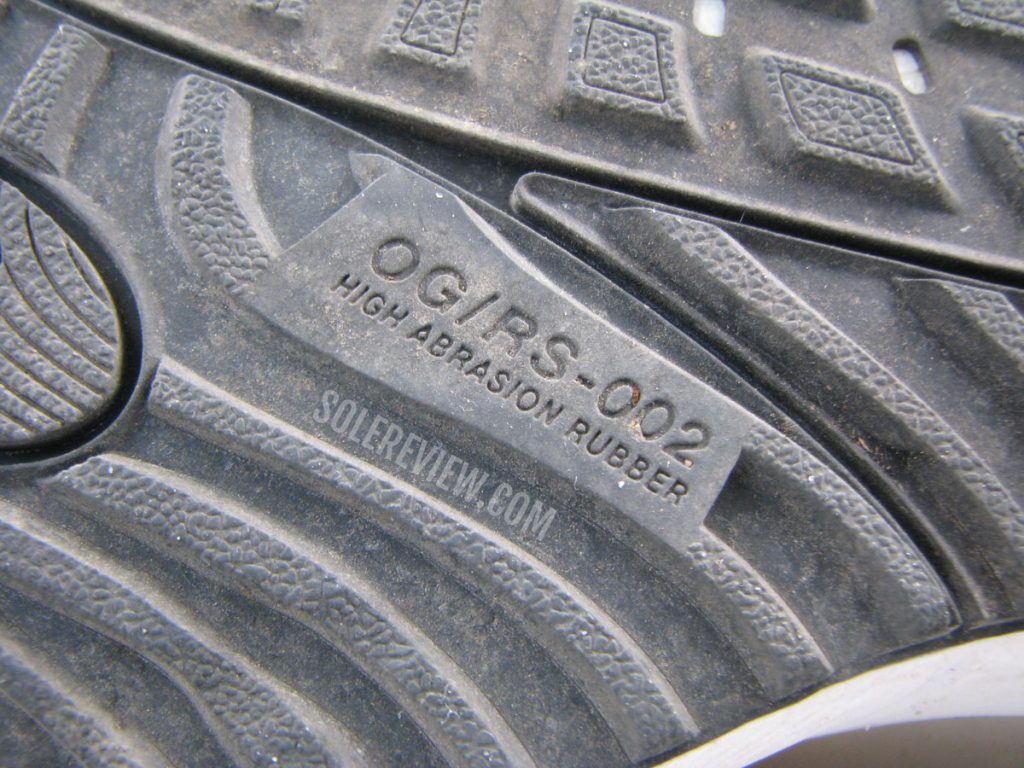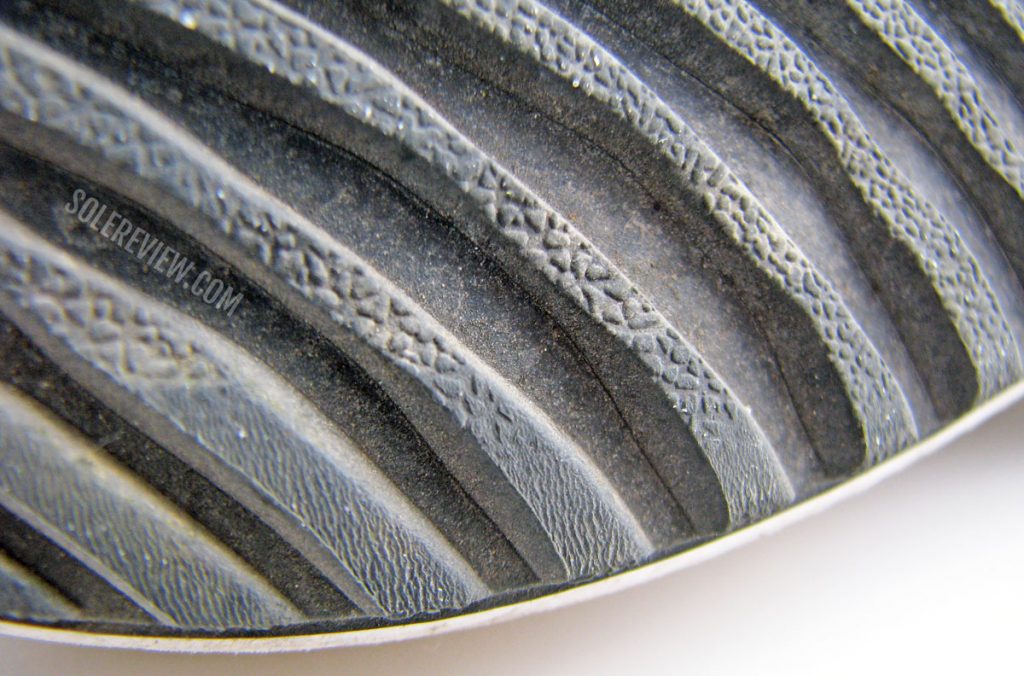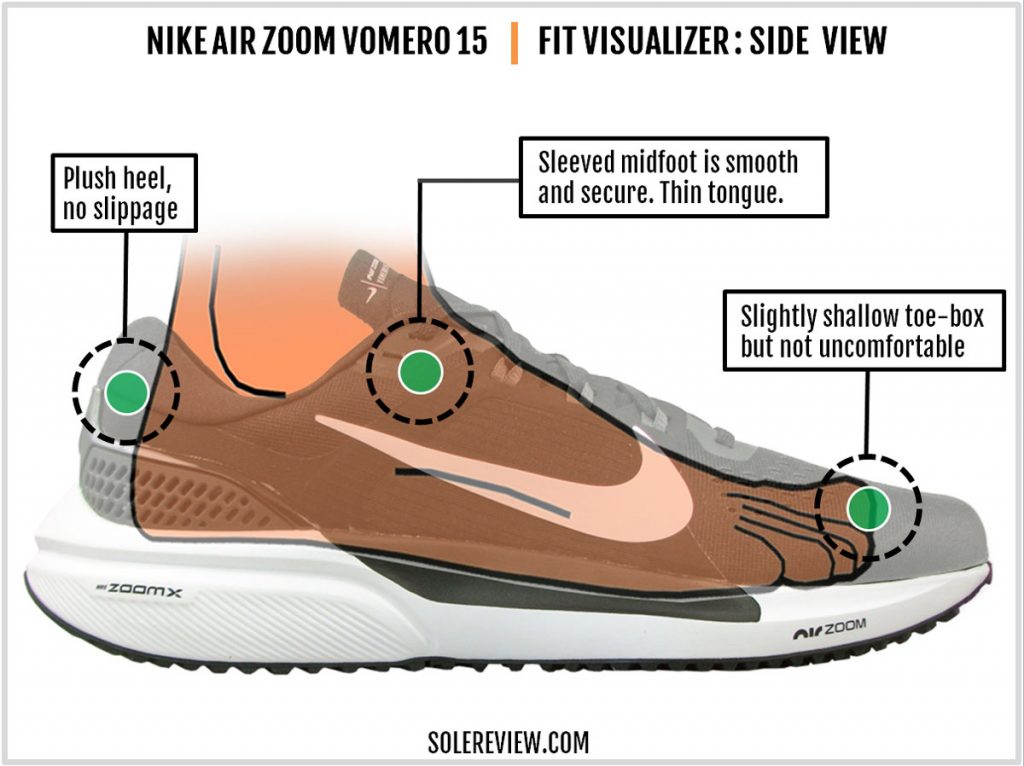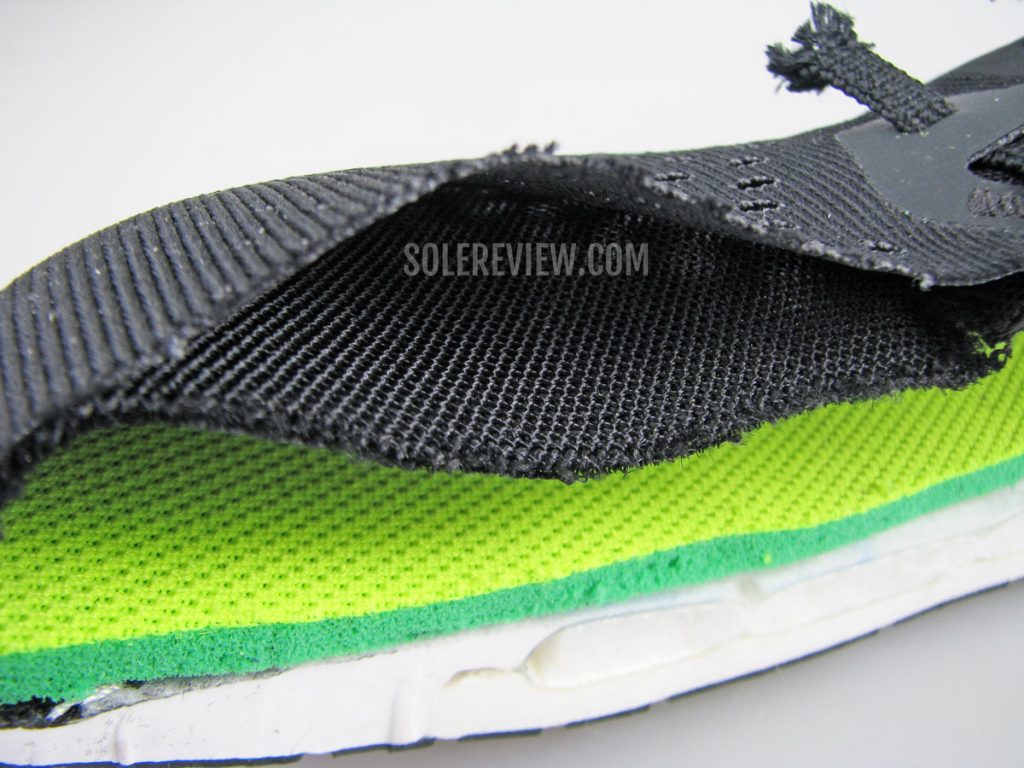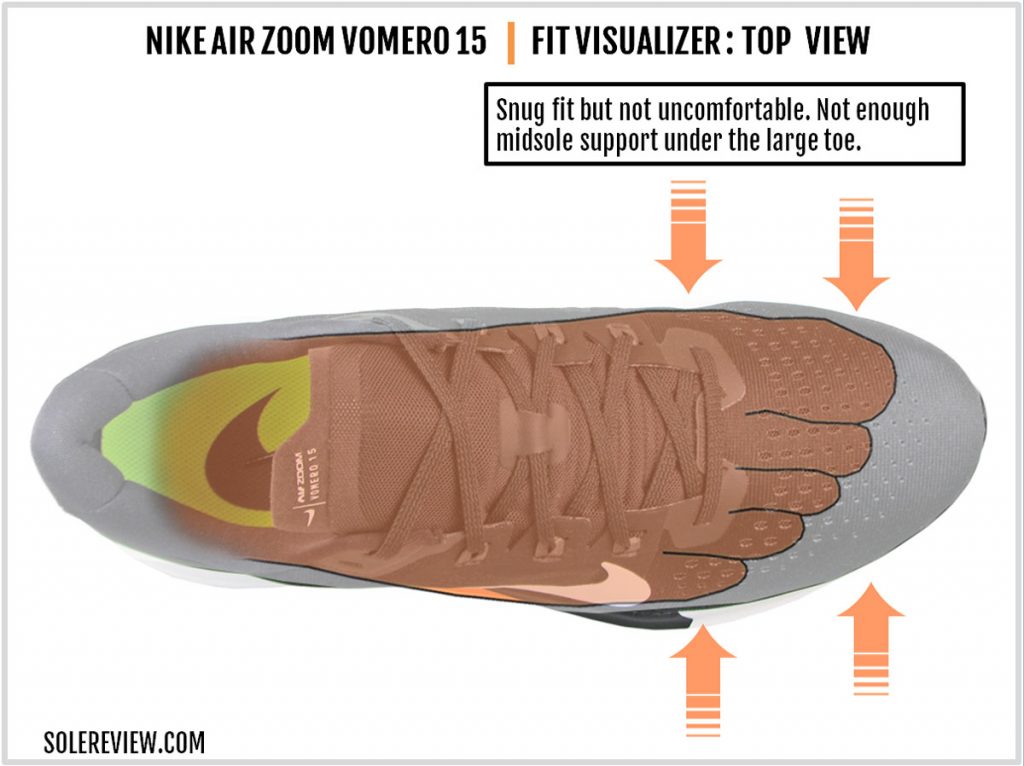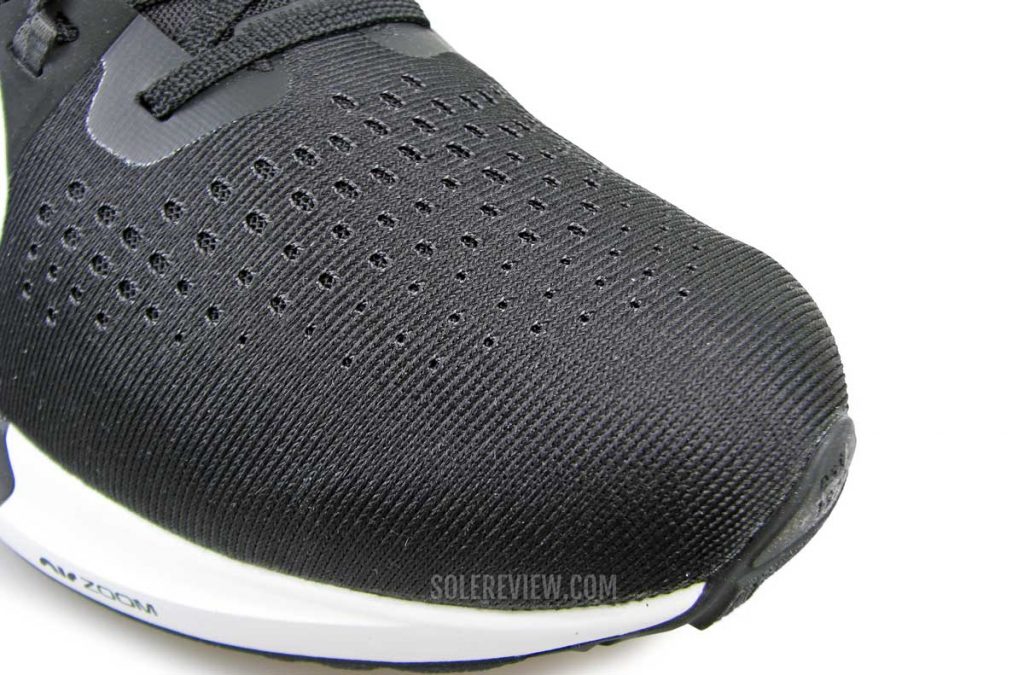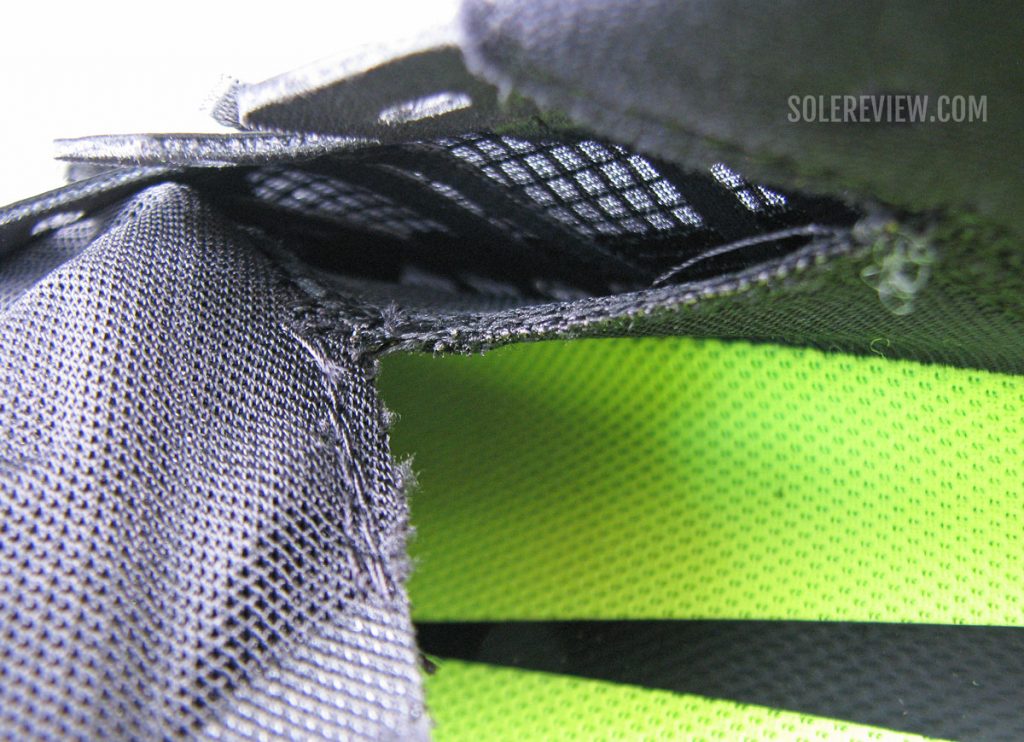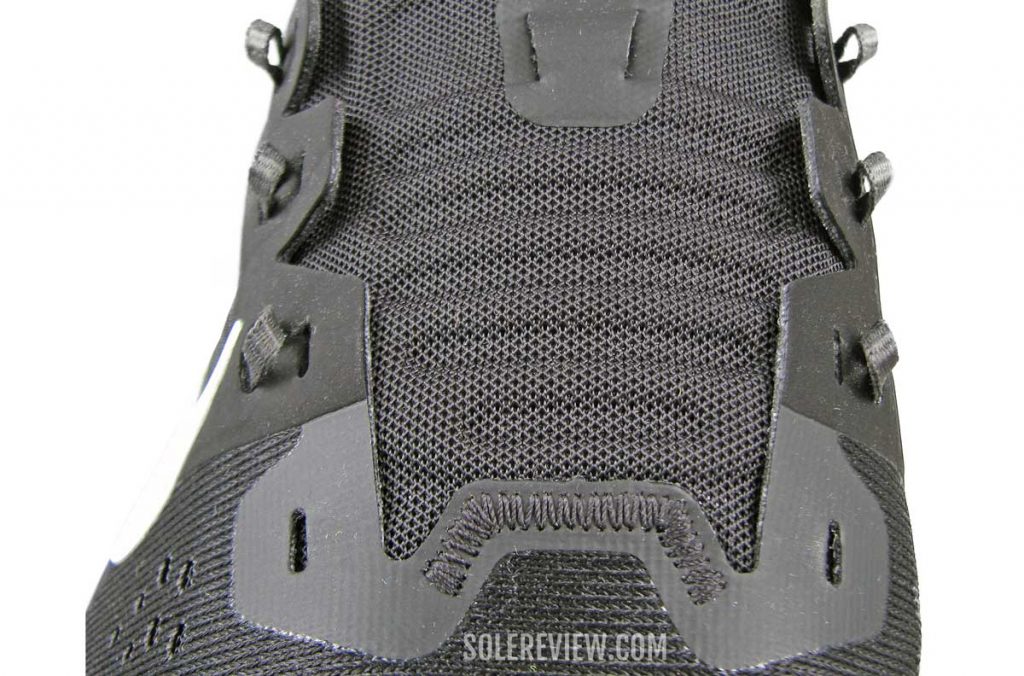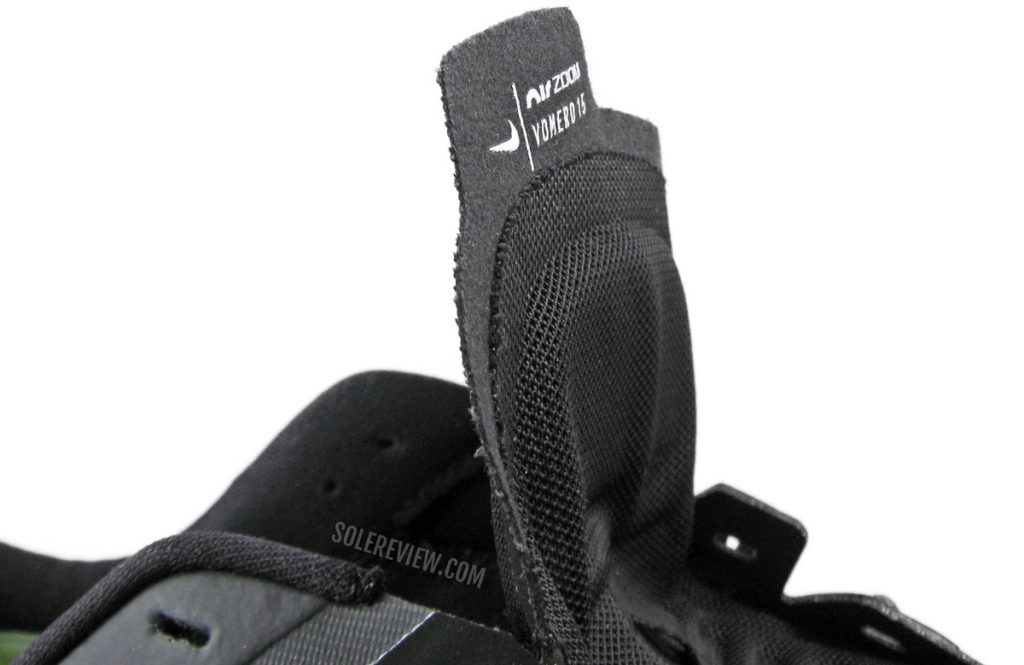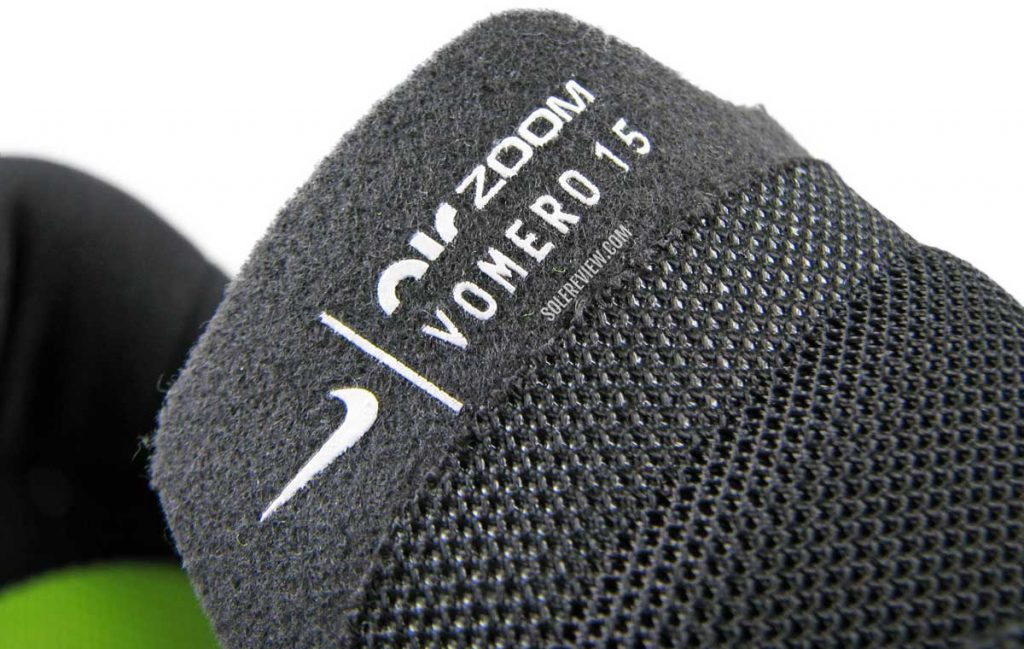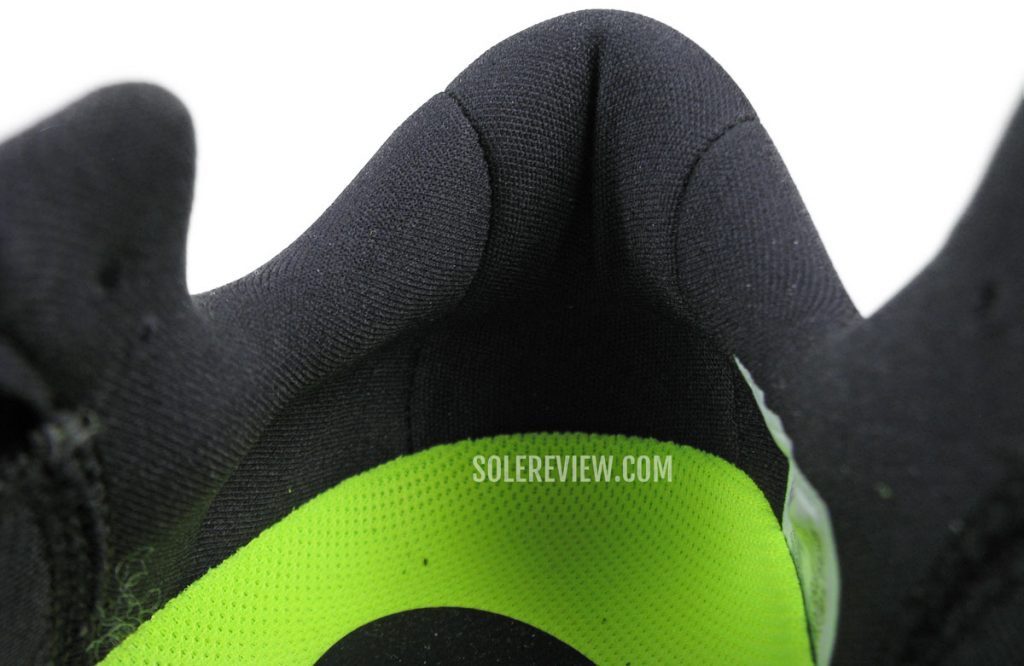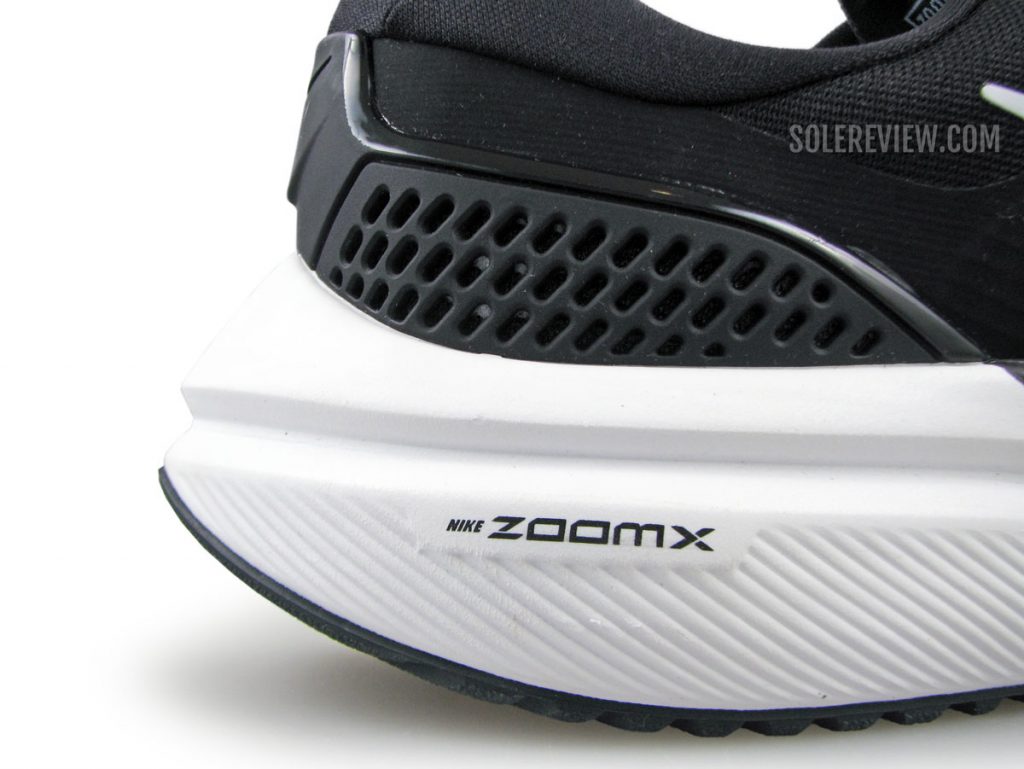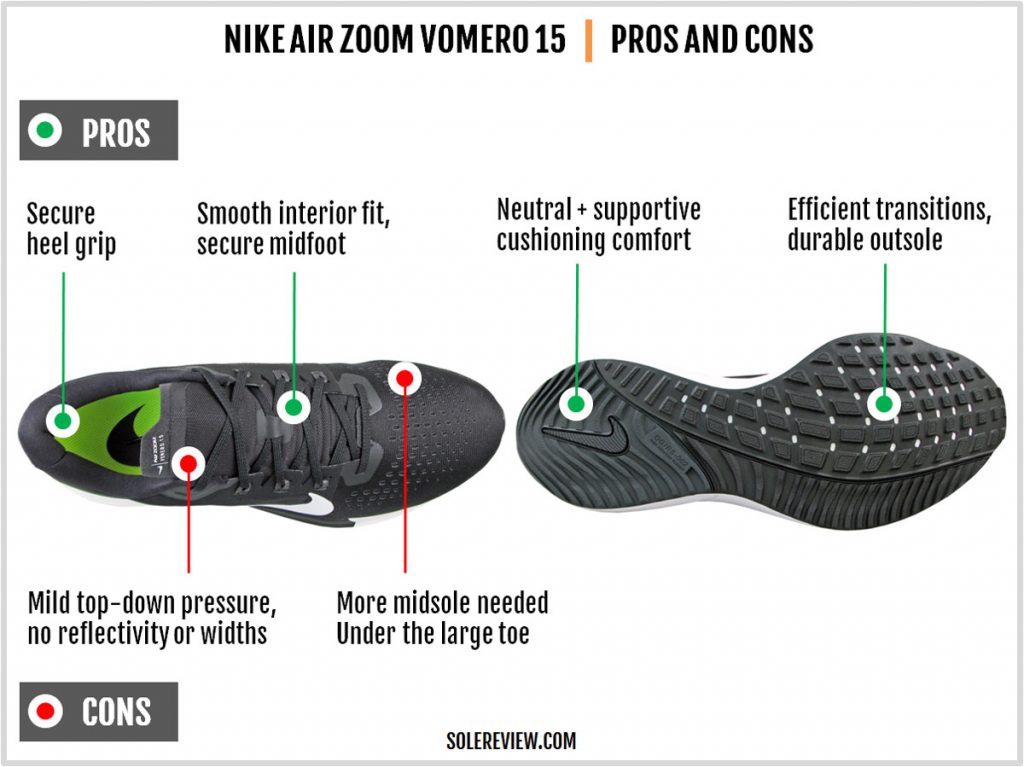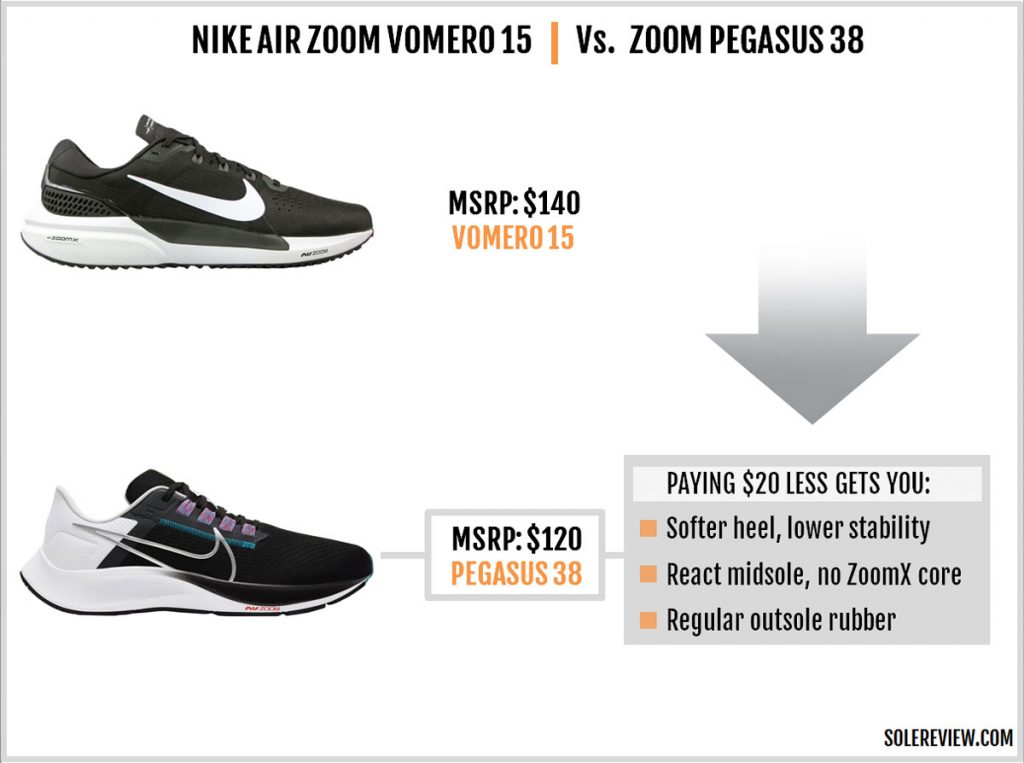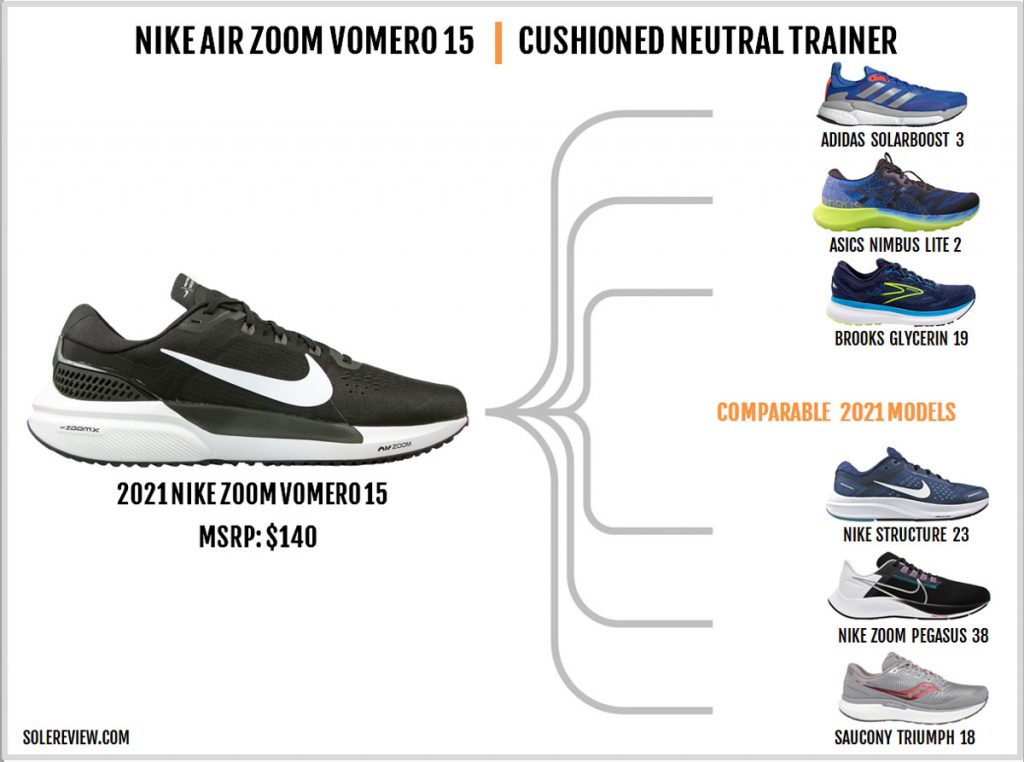INTRODUCTION
The teardown of the Vomero is detailed in a separate article. If you’re interested to find out what’s inside the Vomero 15, give it a read here.
Most of our past Vomero reviews have a recurring theme, and it goes somewhat like this:
We’d usually begin the review by saying that the latest Vomero is nothing like the plusher versions that were last seen over a decade ago. We’d then critique all the features that made it a mediocre interpretation of the lofty Vomero ideal.
We would also point out the lack of clarity in the Vomero’s positioning within Nike’s overall assortment, since products like the Pegasus and Infinity already exist.
But what if Solereview had it backward all this while?
What if Nike never intended the Vomero to be a plush shoe, but a versatile daily trainer that was akin to an upgraded Pegasus? An upgrade, not in the sense of softer cushioning and upper plushness, but achieved through higher-end cushioning materials and trims.
What if the early versions of the Vomero were merely design flukes, and not what a Vomero was actually supposed to be?
That line of reasoning would help anyone see the Vomero in a new – and better – light, including a jaded reviewer like Solereview. Because we’re getting weary of holding the Vomero to a higher standard.
It doesn’t help that Nike claims that the Vomero 15 is ‘inspired’ by the Vomero 5 – a plush running shoe in its time. The Vomero 15 is nothing like the Vomero 5, and we know that because we’ve run in both.
However, even a fresh perspective fails to explain one thing. That would be the Vomero’s place in Nike’s running shoe line; the underlying rationale behind its existence is clear as mud on a cloudy day.
What purpose does keeping this shoe in the Nike catalog achieve? It is also a $140 shoe, so the Vomero 15’s value proposition is a struggle as well.
The Vomero 15, in particular, is a curious mishmash of different upper and midsole tech from Nike’s parts bin.
It’s almost as if Nike tied a shoe last on the end of a long string, covered the said last in glue, and then dragged it through the factory floor to see what sticks. During its journey over the floor, the last would pick up the odd Zoom Air bag, some EVA foam, a plastic heel clip, ZoomX foam, and the obligatory inner sleeve.
The final product has a bit of everything in it, and none of the components shine through. There’s a ZoomX foam core inside, and yet the ride isn’t plush. The Zoom Air bag isn’t as snappy as expected. The midsole shape is quirky under the forefoot, and that has implications on the upper fit.
And as we’ve said before, the Nike Pegasus Turbo would have been the perfect Vomero. On that shoe, the ZoomX foam was a dominant part of the cushioning signature. At the same time, the supportive React base kept the stability levels well within the performance envelope.
While the overall character is underwhelming and does not leave a lasting impression, the Vomero 15 is a comfortable neutral running shoe with unexpected versatility.
The Zoom Air bag, ZoomX, and EVA foam casing (SR02 of the Joyride fame) behave like a cohesive unit and produces a cushioned ride with a tinge of firmness. That makes the Vomero a capable daily trainer that suits different pace and distance ranges.
As odd as it may sound, we prefer the Vomero’s balanced ride over the Pegasus. The Peg’s heel is noticeably softer than the forefoot, and that makes it less versatile in our eyes.
THE NIKE VOMERO 15 vs. 14
On paper, both the Vomero variants have a 10 mm heel-to-toe offset. But as is often the case, the real-world performance differs vastly from what the printed material may suggest.
The 14 had a full-length Zoom Air bag, presumably the same kind used on the Pegasus 35 and 36. The Zoom Air unit was encased in a React foam core with a 22 mm and 12 mm (rear and front) stack.
In contrast, the Vomero 15 has a large forefoot Zoom Air bag that rests inside a ZoomX foam core. Making the outer sidewall supportive is a compression-molded EVA foam frame.
The stack heights have changed too. The V-15 has forefoot and rearfoot stacks of 16 mm and 26 mm, thus adding a few millimeters to the midsole thickness.
Even with a ZoomX core, the Vomero 15’s heel is firmer than the 14 – that’s partly because most of the midsole is made of supportive EVA foam. The new Vomero no longer has the transition groove on the outsole that exposed a lot of midsole foam.
The overall midsole has better cushioning balance than the 14, and that’s credited to the 4 mm higher forefoot with a thicker Zoom Air bag.
The use of a firm EVA frame also produces better stability. The redesigned upper now also has a plastic heel clip, and that too contributes to improved stability. We like the 15’s overall upper fit and feel too. In particular, we don’t miss the flared heel and thin Flywire cords of the Vomero 14.
This year, the Vomero acquires a new outsole that’s made of high-abrasion rubber, thus adding miles to the overall lifespan.
So what’s the takeaway? With its updated midsole, outsole, and upper, the Vomero 15 is superior to the 14 and worth the upgrade.
THE RIDE EXPERIENCE
There’s a lot to unpack in the Vomero 15. We took it apart in our teardown feature to better understand why the shoe behaves the way it does.
After all, the midsole has the magical ZoomX foam in it; so why isn’t the shoe soft and bouncy like the Invincible, Vaporfly, or even the Pegasus Turbo?
Also, the midsole isn’t lacking in thickness; the heel and forefoot stack heights are 26 mm and 16 mm respectively. If anything, the 15’s midsole is 4 mm higher than the Vomero 14 – a running shoe with a softer heel.
So when running in the Vomero 15 does not yield the plush cushioning experience one expects of a ZoomX foam + Air setup in a thicker stack, inquiring minds may want to know why.
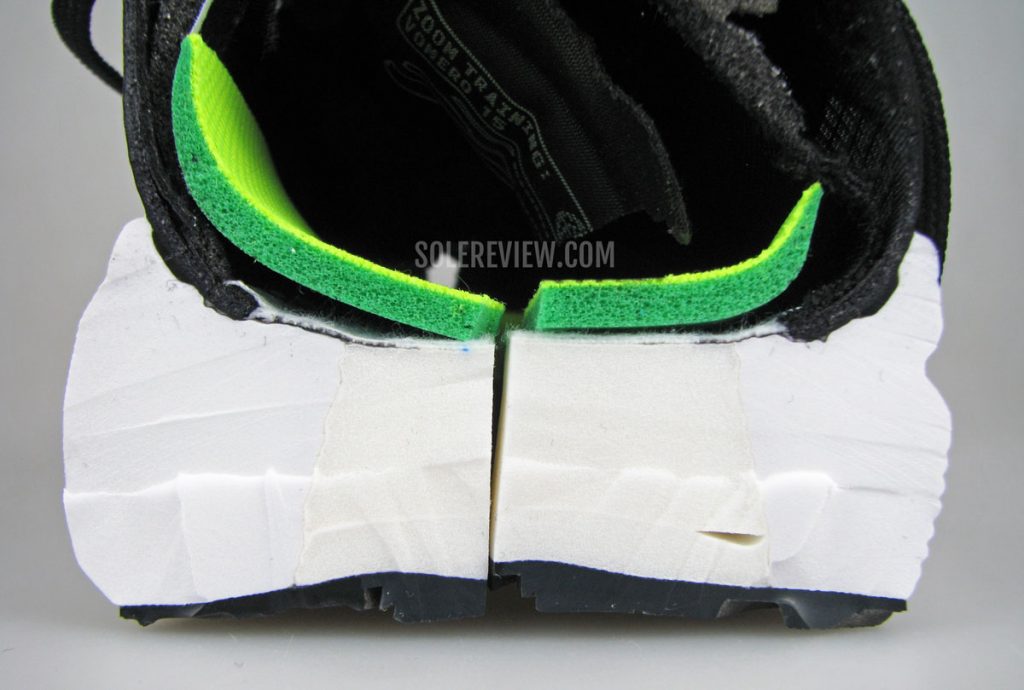
The midsole, when viewed from the rear (to front). ZoomX is half of the width; the outer sidewalls are made of firmer EVA foam.
A cross-section of the midsole explains everything. While ZoomX exists under the heel and forefoot, half of the midsole width consists of firm EVA.
So the foot isn’t resting on 100% ZoomX, but rather a blend of both materials. For all practical purposes, the foot is supported by the EVA casing, and that’s the reason why the Vomero 15 delivers better stability than the Pegasus 37/38 and previous Vomero.
There are a couple of other aspects that affect the ride quality. The Vomero 15 has a very thin lasting – that’s the layer between the removable insole and midsole. Here, the thickness – or thinness – is next to nothing.
This design not only reduces a layer of softness that’s otherwise found in other shoes, but also brings the foot closer to the midsole. Thus, the foot is cupped by the upper and supportive sidewalls, as evident in the dissected heel.
Lastly, the outsole lacks the wide transition groove that left a sizeable portion of the midsole exposed.
The firm EVA midsole also helps deliver smooth and efficient transitions. The supportive sidewalls keep the foot centered over the softer ZoomX core through the gait cycle.
Near the heel edge, the angled bevel prevents the midsole from catching the ground.
Under the heel, the midsole is flared outwards, with only the medial side being slightly more supportive than the outer side. The flared insole also provides decent levels of under-arch support.
Owing to these updates, there’s a noticeable improvement in the stability over the last Vomero, and even when compared to the Pegasus. The new V-15 is more supportive and neutral than the Pegasus, and in our opinion, the more versatile of the two.
For example, the Vomero is a better shoe for faster runs (4:30 min/km, 7 min/mile) than the Pegasus or Vomero 14.
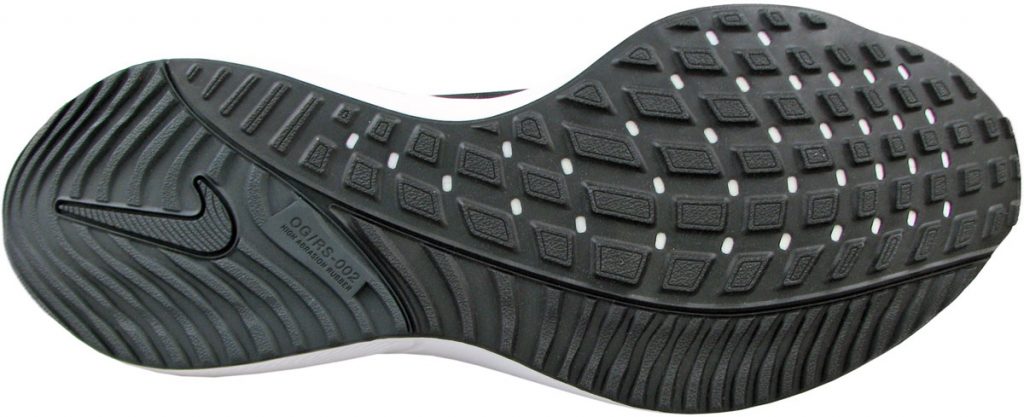
The new outsole lacks a transition groove (seen on the Vomero 14 and Pegasus) that exposed the midsole foam.
The heel and forefoot cushioning are near-evenly matched in softness, and the solid outsole is another reason for the efficient transitions.
Unlike the Peg or Vomero 14, the redesigned outsole no longer has an exposed portion of midsole foam. Neither does the forefoot have articulated lugs; these factors contribute to the newly-acquired firmness and efficiency.
Existing alongside that efficient ride character is also ample cushioning comfort for long-distance runs. Also, the nuanced cushioning of the Vomero is better experienced at slower paces ( around 6 min/km, 10 min/mile pace range).
At more relaxed speeds, the softer ZoomX core and responsiveness of the Zoom Air bag becomes discernible; the individuality of the component(s) is lost at higher speeds.
Nike redesigned the Zoom Air bag a couple of years to reduce the lumpy feeling. The introduction of flex grooves and increasing the surface area were the two key changes.
These updates made the otherwise tightly-sprung unit compliant and better integrated with the rest of the foam components. The thin layer of ZoomX foam under the Air unit acts as a suspension that keeps the unit seated to minimize lumpiness.
The larger Zoom Air bag covers a lot of ground, so forefoot strikers can tap into the full potential of the pressurized Urethane chamber. It’s not snappy as the groove-free designs of old, but there’s a decent amount of responsiveness.
Finally, there’s a peculiar quirk of the Vomero 15 worth pointing out. There’s not enough midsole under the large toe; that part of the foot feels unsupported and tends to roll in. It’s somewhat similar to the Nike Structure 18 – a stability shoe that we reviewed many years ago.
On the other hand, the newest Structure 23’s midsole geometry is well-proportioned, with all the foam present where it’s needed.
Till the time Nike reintroduces a proper road racer into its line, recommending a three-shoe rotation remains slightly tricky. Having a shoe like the Zoom Streak fills in the rotational slot of a road racer.
There’s no problem outside Nike though; there are plenty of speed shoe options like the Saucony Type A9 or cushioned racing shoes like the Asics Metaracer (our review) or the budget Hyper Speed.
The Nike ZoomX Invincible Run (review) is an excellent shoe for those slow, cruising miles. It’s not the shoe for doing speed runs, but it’s comfortable as heck. The New Balance 1080V11 or adidas SolarBoost 3 are also cushioned alternatives for easy runs.
On the other hand, buying a Vaporfly Next % or the Saucony Endorphin Speed or Pro results in a 3 shoe rotation that includes a versatile daily trainer (Vomero), a short-distance racer, and cushioned speed shoe for longer distances.
IS THE NIKE AIR ZOOM VOMERO 15 DURABLE?
Nike advertises the Vomero 15’s outsole as being made of a high-abrasion rubber compound. So far, our ownership experience supports Nike’s claims. The outsole appears extremely durable; there’s barely any wear on the outsole.
There’s some initial scuffing on the ribbed lugs, but other than that, the outsole is as good as new after 50 miles. The midsole is reinforced with compression-molded EVA, so that adds an element of durability to the Vomero.
The upper is double-layered, so the chances of it coming apart are extremely slim. A lifespan of 450 miles is easily doable.
THE UPPER DESIGN AND FIT
Our detailed teardown of the Vomero provides insights into the bi-layered construction of the upper.
The partial gusset of the tongue forms the full inner sleeve that extends to the toe-box.
The sleeve is made of a padded spacer mesh, so while this design makes the interiors smooth, it also turns the fit snug. The toe-box ceiling is also low, so there’s not a great deal of wriggle room.
There are pros and cons of such a fit. The form-fitting and true-to-size upper keeps the foot securely held over the midsole during faster runs – which is good.
On the flip side, the layering makes the shoe warm. Even though the exterior has ‘vents’ designed on the engineered mesh, the sleeve lacks circulation-friendly perforation.
At the time of writing this review, no optional widths are available. Also, there’s zero reflectivity on the upper, so the Vomero isn’t suitable for low light conditions.
Nike uses wide midfoot straps instead of the thin Flywire cords of the Vomero 14. We view this change as an improvement; the thicker cords are better are spreading the cinching pressure without creating hot spots.
The laces need to be cinched tight before a run, else they tend to come untied.
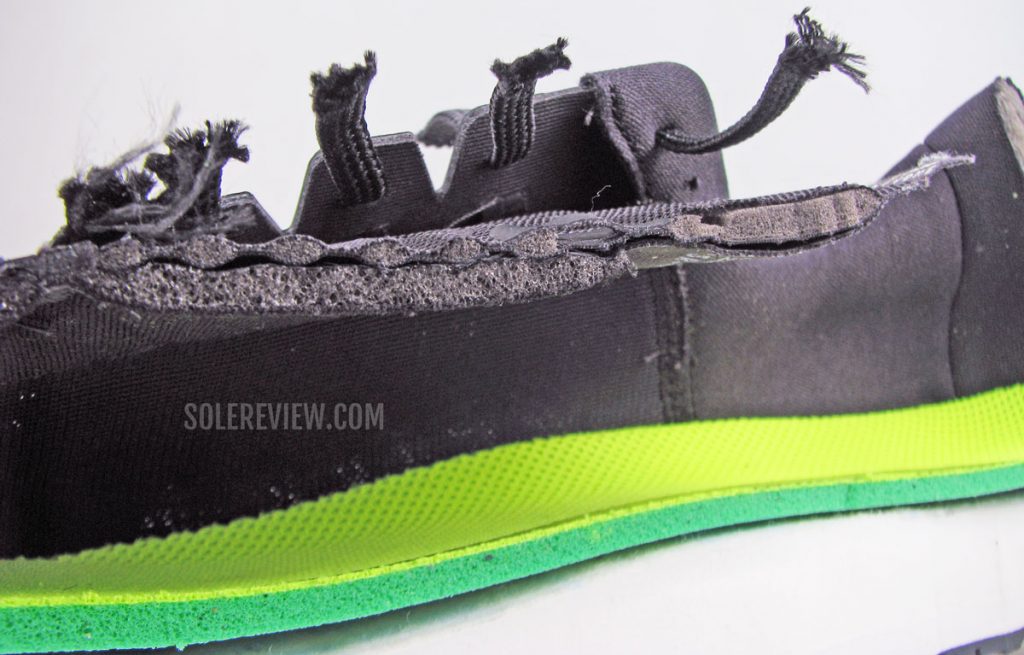
The upper has a sleeve that begins a little after the tongue flap and extends to the toe-box. The tongue has minimal foam padding.
The tongue is fairly thin with the foam padding limited to a bare minimum. Though there is some top-down lacing pressure felt over the instep, it’s not uncomfortable. The flap is unpadded and is made of a soft material that doesn’t bite the instep.
The flap is also asymmetrically designed with an off-center tab so that it doesn’t ride over the foot.
The fit in the back is excellent. The padded collar and plastic clip result in a confidence-inspiring heel grip with no slippage.
PROS AND CONS
The Vomero, while not the plush trainer that a lot of people expect it to be, delivers a surprisingly versatile ride.
The EVA + ZoomX + Zoom Air combination results in a supportive ride with ample cushioning comfort to make long runs less punishing. The outsole traction is excellent, and so is its resistance to long-term wear and tear.
Except for the lack of widths and reflectivity, the upper does what’s supposed to – it has a smooth and secure fit in a true-to-size profile.
Ideally, we’d prefer a thicker tongue instead of the thin tongue that lets the lacing pressure through, but that’s not a flaw – more like a feature request. The Vomero could do with a padded tongue, just like how the Pegasus 38 got a redesigned tongue.
THE NIKE ZOOM VOMERO 15 VS. PEGASUS 38
Besides the technical differences – like say, the Vomero’s ZoomX configuration vs. the Pegasus 38’s React core – both shoes differ in how they deliver their cushioning.
Due to the React-only core, foam Strobel, and the under-heel groove, the Pegasus is softer in the heel.
In comparison, the Vomero’s cushioning is supportive and achieves a better balance between the front and rear – and thus, offers a more neutral ride experience. As we said, the Vomero 15 is a superior version of the Pegasus.
The Vomero lacks creature comforts such as the foam lasting and under-heel groove, so the firmer ride is more versatile than the Pegasus. The Vomero’s outsole is made of a high-abrasion rubber, thus giving it a slight edge over the less expensive Pegasus.
SHOES SIMILAR TO THE NIKE AIR ZOOM VOMERO 15
A Zoom Air-based cushioning is unique within the running shoe ecosystem, so the closest match to the Vomero 15 would be other Nike models like the Structure 23 and Pegasus 38.
Even without ZoomX foam, both models deliver a similar forefoot cushioning experience. The Pegasus is softer in the rear, whereas the Structure has, well, more structure to its midsole. Out of the three, the Vomero 15 strikes the best balance between high-mileage comfort and a speed-friendly ride character.
We also loved the Asics Nimbus Lite 2 – a running shoe that felt plush as well as nimble enough. Given a choice, we’d pick the Nimbus Lite 2 over the Vomero 15.
There are a couple of alternatives with resilient expanded Polyurethane (e-TPU) midsoles. The adidas SolarBoost 3 delivers a soft and bouncy ride from its high-volume Boost midsole.
Though Saucony Triumph 18 also uses a similar base material, it has a firmer ride than Boost. This difference in character affects the ideal use-cases for both models.
The adidas Solar Boost 3’s softness goes easy on the feet during high-mileage sessions, whereas the firmer Triumph works better at higher paces than the SolarBoost 3.
Finally, the Brooks Glycerin is your typical EVA blend-based running shoe with a smooth and cushioned ride.
Do you own this shoe? Improve this review by sharing your insights – submit a review here.

